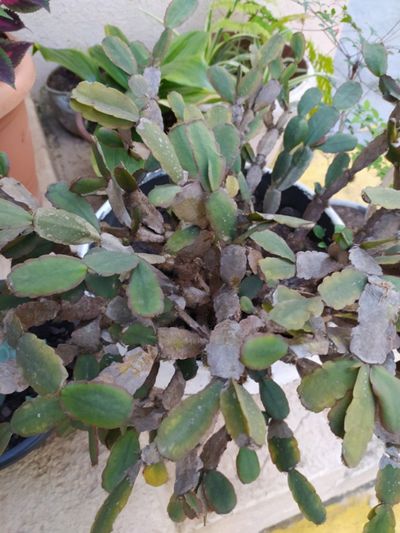Why Do Christmas Cactus Leaves Turn Purple?
Oftentimes, a purplish tint to your Christmas cactus leaves is normal. That said, if it’s noticeably throughout the leaves, it may signal an issue with your plant. Below are the most common reasons for leaves becoming red or purple on Christmas cacti: Nutritional issues – If you don’t fertilize your Christmas cactus regularly, the plant may be lacking necessary nutrients. Feed the plant monthly from spring until mid-autumn with a general purpose fertilizer for indoor plants. Additionally, because Christmas cacti require more magnesium than most plants, it normally helps to provide a supplemental feeding of 1 teaspoon (5 mL.) of Epsom salts dissolved in one gallon of water. Apply the mixture once every month throughout spring and summer, but don’t use the Epsom salt mixture the same week you apply regular plant fertilizer. Crowded roots – If your Christmas cactus is rootbound, it may not be absorbing nutrients effectively. This is one possible reason for reddish-purple Christmas cactus leaves. Keep in mind, however, that Christmas cactus thrives with crowded roots, so don’t repot unless your plant has been in the same container for at least two or three years. If you determine that the plant is rootbound, repotting Christmas cactus is best done in spring. Move the plant to a container filled with a well-drained potting mix such as regular potting soil mixed with perlite or sand. The pot should be just one size larger. Location – Christmas cactus requires bright light during fall and winter, but too much direct light during the summer months may be the reason for Christmas cactus leaves turning purple on edges. Moving the plant to a more appropriate location may prevent sunburn and solve the problem. Be sure the location is away from open doors and drafty windows. Similarly, avoid hot, dry areas such as near a fireplace or heating vent.
